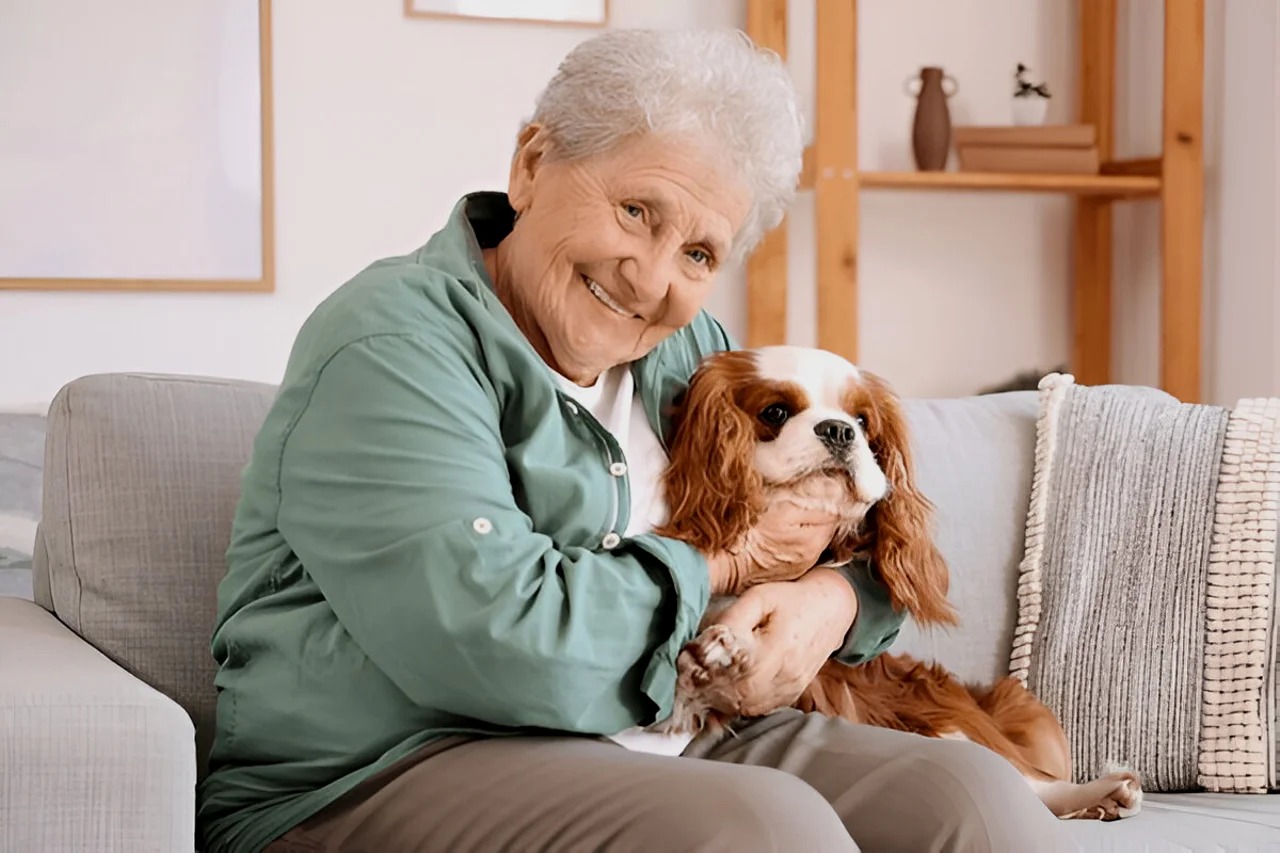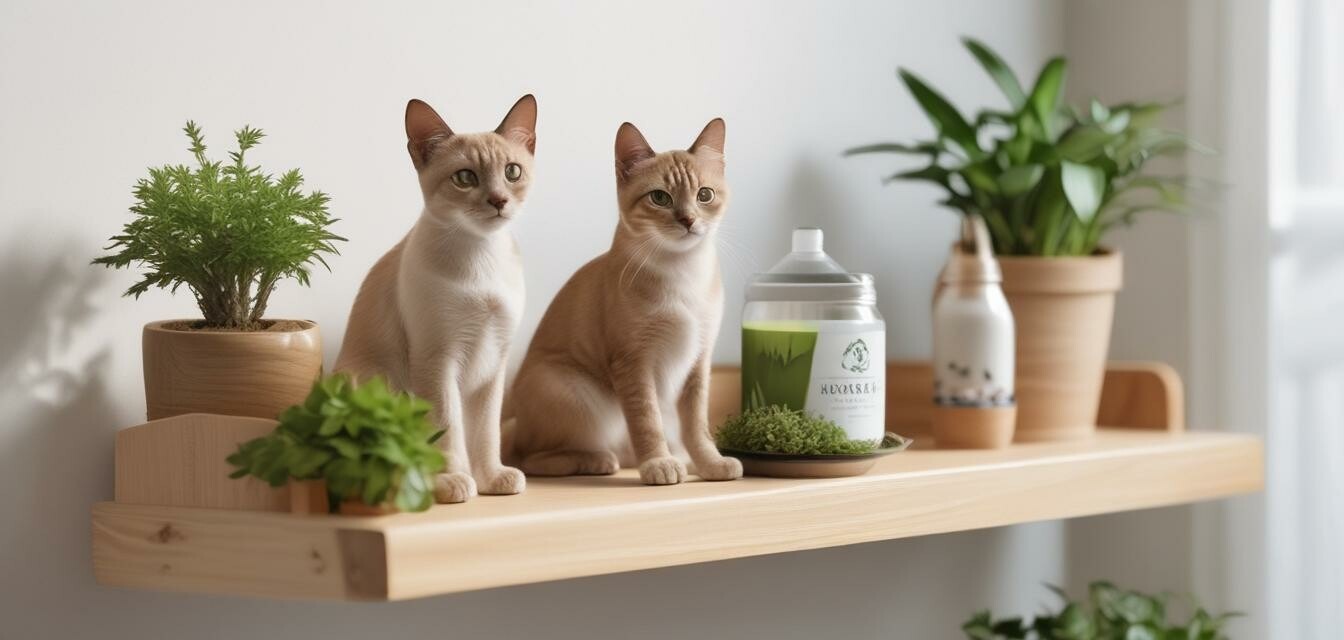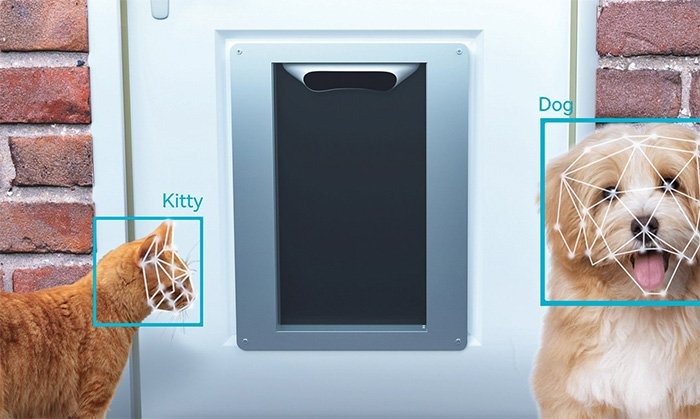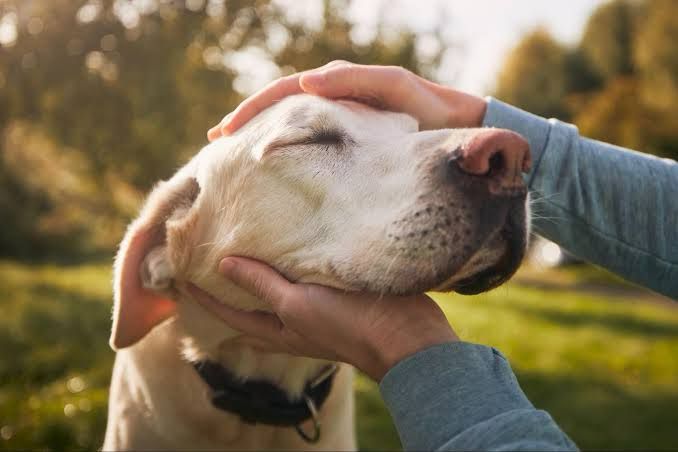
Senior Pet Care* – Comfort and health tips for aging pets.
Caring for Aging Pets with Love and Expertise – Learn how to support your senior dogs, cats, and small animals through proper nutrition, gentle exercise, veterinary care, home modifications, mental stimulation, and holistic therapies. Discover practical tips to ease joint pain, cognitive decline, sensory loss, and chronic illnesses, ensuring your beloved companions enjoy comfort, happiness, and quality of life in their golden years.
🐶 Pet Star
44 min read · 16, Sep 2025

Introduction
Aging is a natural process, not only for humans but also for our beloved pets. Whether you share your home with a dog, cat, rabbit, or another companion animal, the golden years come with unique challenges and changes. Senior pets often face declining mobility, slower metabolisms, vision or hearing loss, and an increased risk of chronic illnesses such as arthritis, kidney disease, or diabetes. While these changes may seem overwhelming, with the right knowledge, care, and compassion, pet parents can help their senior pets enjoy a happy, comfortable, and fulfilling life.
This article explores senior pet care in detail, offering practical comfort and health tips, nutritional advice, exercise routines, home modifications, mental enrichment, and veterinary considerations. By understanding the needs of aging pets, owners can extend both the quality and length of their furry friend’s life.
Understanding When a Pet Becomes a Senior
The definition of “senior” varies depending on species and breed.
- Dogs: Small breeds may be considered seniors at 8–10 years, while large and giant breeds often enter their senior stage around 6–7 years.
- Cats: Generally considered seniors at 10 years and older.
- Other pets (rabbits, guinea pigs, etc.): Senior stages can begin at around two-thirds of their expected lifespan.
Factors such as genetics, environment, and diet also influence how quickly a pet ages. Recognizing these shifts early allows owners to make lifestyle adjustments before serious health problems emerge.
Common Health Issues in Senior Pets
- Arthritis and Joint Pain
- Stiffness, difficulty climbing stairs, or reluctance to jump may signal joint discomfort.
- Pets with arthritis need supportive bedding, joint supplements (glucosamine, chondroitin), and low-impact exercise.
- Dental Disease
- Gum disease and tooth decay are common in aging pets and can lead to systemic infections.
- Regular dental cleanings, home brushing, and dental chews help maintain oral health.
- Vision and Hearing Loss
- Cloudy eyes, bumping into objects, or ignoring commands may indicate sensory decline.
- Keeping furniture in consistent places and using hand signals or vibrations can help.
- Kidney and Liver Problems
- Increased thirst, frequent urination, or weight loss may signal organ dysfunction.
- Prescription diets and medications often help manage these conditions.
- Cancer
- Older pets are more prone to tumors. Early detection through routine checkups is crucial.
- Cognitive Dysfunction Syndrome (CDS)
- Similar to dementia in humans, CDS leads to confusion, restlessness, and disrupted sleep.
- Mental stimulation and certain medications can help slow progression.
Nutrition for Aging Pets
As pets grow older, their dietary needs change. Proper nutrition supports energy levels, joint health, and organ function.
- Lower calories: Senior pets often need fewer calories due to slower metabolism and reduced activity.
- High-quality protein: Essential for maintaining muscle mass, but should be adjusted for pets with kidney issues.
- Joint-supporting nutrients: Omega-3 fatty acids, glucosamine, and chondroitin help with mobility.
- Digestive health: Fiber-rich diets prevent constipation. Probiotics support gut health.
- Specialized senior diets: Many pet food brands offer formulas designed specifically for aging pets.
Always consult a veterinarian before changing your pet’s diet, especially if they have chronic conditions.
Exercise and Mobility Support
While aging pets may not have the energy of their younger days, regular activity is still essential.
- Low-impact exercises: Short walks, gentle play sessions, or swimming (for dogs) maintain mobility without straining joints.
- Weight management: Keeping pets at a healthy weight reduces stress on joints and organs.
- Mobility aids: Pet ramps, orthopedic beds, non-slip rugs, and harnesses help pets move more easily.
Veterinary Care for Senior Pets
Preventive care becomes even more critical as pets age.
- Biannual checkups: Twice-a-year vet visits allow for early detection of health problems.
- Blood tests & screenings: Monitor organ function and detect illnesses before symptoms appear.
- Vaccinations: Seniors may need fewer vaccines but should still be protected against core diseases.
- Pain management: Medications, supplements, or therapies like acupuncture can provide relief.
Comfort and Home Adjustments
Creating a safe, stress-free environment makes a world of difference for senior pets.
- Orthopedic bedding: Reduces joint pain and pressure sores.
- Temperature control: Older pets are sensitive to heat and cold. Provide warm blankets or cooling mats as needed.
- Accessible food and water bowls: Elevated dishes reduce strain on necks and joints.
- Safe spaces: Quiet, low-traffic areas allow seniors to rest without stress.
- Home modifications: Adding ramps, non-slip mats, or pet stairs helps prevent falls.
Mental Stimulation and Emotional Well-being
Aging pets not only need physical care but also mental enrichment to stay happy.
- Interactive toys and puzzles: Keep cognitive skills sharp.
- Short training sessions: Reinforce old commands or teach new ones using treats.
- Social interaction: Gentle play, petting, and companionship reduce anxiety and loneliness.
- Routine and stability: Predictable schedules help pets feel secure.
Alternative and Supportive Therapies
Many pet owners are turning to holistic and complementary therapies to support senior pets.
- Acupuncture and massage: Reduce pain and improve mobility.
- Hydrotherapy: Swimming or underwater treadmill exercises are great for joint health.
- Herbal remedies: Under veterinary guidance, certain herbs can support digestion, cognition, or joint health.
Preparing for End-of-Life Care
Though difficult to think about, planning ahead ensures dignity and comfort for senior pets nearing the end of life.
- Palliative care: Focuses on managing pain and maintaining quality of life.
- Hospice care: Provides comfort in the final stages of illness.
- Euthanasia considerations: Making compassionate decisions prevents unnecessary suffering.
Pet parents should seek support from veterinarians, family, and grief counseling resources when facing these decisions.
As pets grow older, their needs shift in ways that require greater attention, patience, and compassion from their owners, and providing senior pet care becomes an essential part of ensuring their golden years are filled with comfort, health, and dignity; understanding what it means for a pet to be “senior” is the first step, since dogs may reach this stage between 6–10 years depending on breed size, cats around 10 years, and smaller animals like rabbits or guinea pigs at two-thirds of their expected lifespan, and with aging come challenges such as arthritis, dental disease, reduced vision and hearing, organ problems, cognitive dysfunction, and even increased cancer risks, all of which can affect their quality of life if not managed properly, but attentive owners can take proactive steps to ease this transition, starting with nutrition since older pets often require fewer calories due to slower metabolism yet still need high-quality protein to maintain muscle mass, along with omega-3 fatty acids, glucosamine, chondroitin, probiotics, and fiber to support joints, digestion, and organ function, and many pet food brands now offer specialized senior formulas that can be adjusted with veterinary guidance to meet individual needs, while regular low-impact exercise like short walks, gentle play, or swimming keeps them mobile without straining fragile joints, and mobility aids such as ramps, orthopedic beds, non-slip mats, or harnesses make moving around easier and safer, especially for pets struggling with arthritis or stiffness, while keeping pets at a healthy weight is equally crucial since obesity places strain on joints and internal organs; alongside lifestyle adjustments, veterinary care plays a central role in senior pet wellness, with twice-yearly checkups recommended for early detection of problems like kidney disease, diabetes, or cancer, supported by routine blood work and diagnostic screenings that provide insights before symptoms become obvious, and vets can also help manage pain through medications, supplements, and even therapies such as acupuncture, massage, or hydrotherapy, which are gaining popularity for their effectiveness in reducing discomfort and improving mobility, while vaccinations may be reduced but core protections should remain updated; at home, pet parents can improve comfort with simple modifications like soft orthopedic bedding to ease pressure on joints, consistent temperature regulation since older pets are more sensitive to heat and cold, elevated food and water bowls to reduce strain on necks, and quiet resting spaces away from heavy foot traffic to provide a sense of security, while safe and familiar home layouts are particularly important for pets experiencing vision or hearing loss, preventing confusion or accidents, and beyond physical needs, senior pets also require mental enrichment and emotional support to prevent cognitive decline and loneliness, so interactive toys, food puzzles, short training sessions, and regular social interaction can help keep their minds engaged, while predictable routines give them a sense of stability, and even pets with cognitive dysfunction syndrome benefit from these strategies along with medications that veterinarians may prescribe to slow progression, while alternative therapies like herbal remedies (under veterinary guidance) and supportive practices like massage and hydrotherapy can further enhance overall well-being, and while the idea of end-of-life care can be emotionally overwhelming, it is important to prepare for palliative or hospice options that prioritize comfort over cure, giving pets dignity in their final days, with euthanasia considered compassionately when suffering outweighs quality of life, supported by guidance from veterinarians and emotional resources for grieving owners, because although aging is inevitable, the way owners respond to it determines whether those years are filled with discomfort or love, and ultimately, senior pet care is about embracing proactive prevention, making thoughtful adjustments, and providing both physical and emotional nourishment that allows pets to thrive as long as possible, since with balanced nutrition, gentle exercise, timely veterinary care, mental engagement, and a safe, comforting environment, pets can live their later years not merely surviving but enjoying the warmth, companionship, and love they have always given so freely, reminding us that their golden years can truly shine when approached with understanding and dedication.
As pets age, they experience a range of physical, mental, and emotional changes that require careful attention and compassionate care from their owners, because understanding when a pet becomes a senior is crucial in order to anticipate their evolving needs, with dogs generally entering their senior years between six and ten years depending on breed size, cats around ten years, and smaller pets like rabbits or guinea pigs reaching this stage at approximately two-thirds of their expected lifespan, and although aging is a natural process, it brings with it common challenges such as arthritis, joint pain, dental disease, vision and hearing loss, organ dysfunction including kidney and liver problems, cognitive decline similar to dementia, and an increased susceptibility to cancer, all of which can significantly affect a pet’s quality of life if not properly addressed, making proactive measures essential; nutrition is one of the most important pillars of senior pet care because as metabolism slows with age, pets require fewer calories yet still need high-quality protein to maintain muscle mass and strength, while omega-3 fatty acids, glucosamine, chondroitin, fiber, and probiotics support joint health, digestion, and organ function, and many commercial pet food brands now offer specialized senior formulas that cater to these nutritional needs, although any dietary change should be made in consultation with a veterinarian to ensure the pet’s individual health requirements, particularly if chronic conditions are present; alongside diet, exercise remains vital to keep aging pets mobile and healthy, though it must be carefully adapted to their abilities, with low-impact activities such as short walks, gentle play, or swimming helping to maintain joint flexibility, cardiovascular health, and overall vitality without placing undue strain on aging bodies, while mobility aids like ramps, non-slip flooring, orthopedic beds, and harnesses can make movement easier and safer, especially for pets with arthritis, stiffness, or reduced balance, and maintaining a healthy weight through proper diet and controlled activity further reduces stress on joints and internal organs, helping prevent obesity-related complications; regular veterinary care becomes even more critical as pets enter their senior years, with biannual checkups recommended to monitor for early signs of disease such as diabetes, kidney dysfunction, heart issues, or cancer, supported by routine blood tests, urinalysis, and other screenings that allow veterinarians to detect problems before symptoms become obvious, and vaccinations should be maintained according to medical advice to protect against core diseases, while pain management, whether through medications, supplements, acupuncture, massage, or hydrotherapy, can significantly improve an older pet’s comfort and quality of life; home environment modifications also play a crucial role in senior pet well-being, as pets with joint stiffness, limited mobility, or sensory impairments benefit from soft orthopedic bedding to relieve pressure on joints, elevated food and water bowls to prevent strain on the neck and spine, non-slip rugs or flooring to reduce the risk of falls, ramps or pet stairs to allow access to favorite resting places without jumping, consistent furniture placement to help pets with vision loss navigate safely, and temperature-controlled spaces since older pets are more sensitive to heat and cold, while quiet, low-traffic areas provide a secure space for rest and relaxation, reducing stress and promoting emotional comfort; mental stimulation and social interaction are equally important, as cognitive decline can lead to confusion, anxiety, and behavioral changes, so interactive toys, food puzzles, gentle training sessions, and short periods of play keep the mind active, while regular companionship and predictable routines provide emotional security, and pets with cognitive dysfunction syndrome may benefit from medications or supplements prescribed by a veterinarian to slow progression and maintain engagement, highlighting the importance of both mental and physical care in extending a pet’s quality of life; complementary therapies, including massage, acupuncture, hydrotherapy, and certain herbal remedies under veterinary supervision, can offer additional support for joint health, circulation, and relaxation, demonstrating that holistic approaches can work alongside traditional medical care to improve well-being; finally, preparing for end-of-life care with compassion ensures that pets experience dignity and comfort in their final stages, including palliative care to manage pain and symptoms, hospice services to provide support during terminal illness, and when necessary, humane euthanasia to prevent suffering, all guided by veterinary advice and supported by emotional resources for grieving owners, emphasizing that proactive planning reflects the love and responsibility that comes with pet ownership; ultimately, senior pet care is about anticipating changes, addressing health issues promptly, providing nutrition tailored to aging needs, maintaining gentle yet consistent exercise, creating a safe and comfortable home environment, offering mental stimulation and companionship, and seeking veterinary guidance for both preventative and palliative measures, because while aging is inevitable, the quality of those later years depends entirely on the attention, empathy, and dedication of the pet parent, and with thoughtful interventions, aging pets can continue to enjoy a fulfilling, happy life full of comfort, companionship, and love, reminding us that the later years of a pet’s life, while challenging, can also be deeply rewarding when approached with knowledge, patience, and unwavering care, allowing our furry friends to thrive physically, mentally, and emotionally, even as they navigate the natural process of growing older, and demonstrating that senior pets deserve the same devotion and attention as they did in their youth, with adjustments that honor their changing needs and celebrate the bond shared between pet and owner, ultimately transforming the golden years into a period of safety, joy, and continued connection.
Conclusion
Senior pets bring unparalleled joy, loyalty, and companionship, but their care requires patience, adaptation, and vigilance. By focusing on nutrition, exercise, veterinary care, home comfort, mental enrichment, and compassionate support, pet owners can make their aging companions’ golden years truly golden.
The key to senior pet care lies in prevention and proactive support. Regular checkups, dietary adjustments, and environmental modifications not only extend lifespan but also enhance quality of life. While aging cannot be stopped, comfort, love, and thoughtful care ensure that pets continue to thrive, even in their twilight years.
Q&A Section
Q1: What age is considered senior for dogs and cats?
Ans: Dogs are typically seniors between 6–10 years depending on breed size, while cats are considered seniors at around 10 years old.
Q2: How often should senior pets visit the vet?
Ans: Senior pets should have veterinary checkups at least twice a year to catch health issues early.
Q3: What is the best diet for senior pets?
Ans: A balanced diet with lower calories, high-quality protein, joint-supporting supplements, and fiber is ideal. Specialized senior formulas are widely available.
Q4: How can I make my home more comfortable for an aging pet?
Ans: Provide orthopedic beds, non-slip flooring, ramps or stairs, and accessible food and water bowls. Maintain consistent routines for security.
Q5: Can senior pets still exercise?
Ans: Yes. Low-impact exercises like short walks, swimming, or gentle play help maintain mobility and prevent obesity without straining joints.
Similar Articles
Find more relatable content in similar Articles

Sustainable Pet Products: What to Look for in 2025...
As sustainability becomes a ce.. Read More

Smart Homes for Pets: Automated Feeders, Doors, and Mo..
As smart home technology advan.. Read More

How Climate Change Affects Wild and Domestic Animals...
Climate change is dramatically.. Read More

Senior Pet Adoption: Why Older Animals Make the Best C..
Adopting a senior pet is a pro.. Read More
Explore Other Categories
© 2024 Copyrights by rPets. All Rights Reserved.